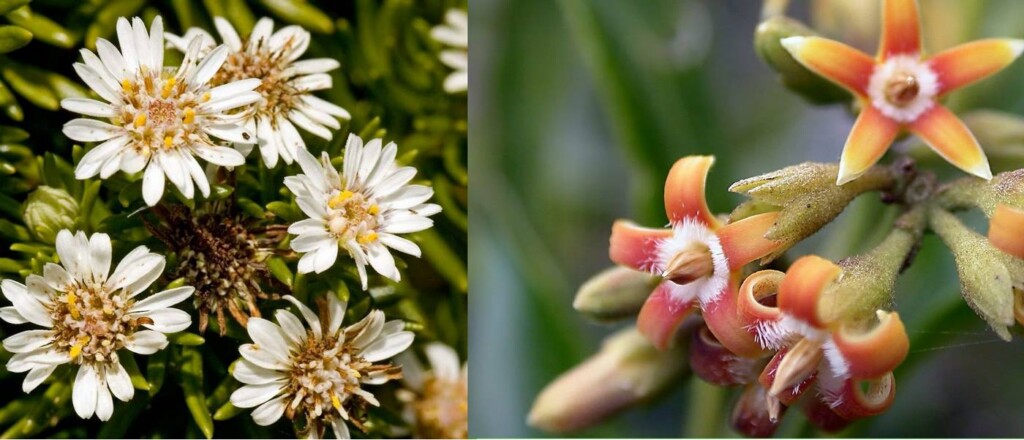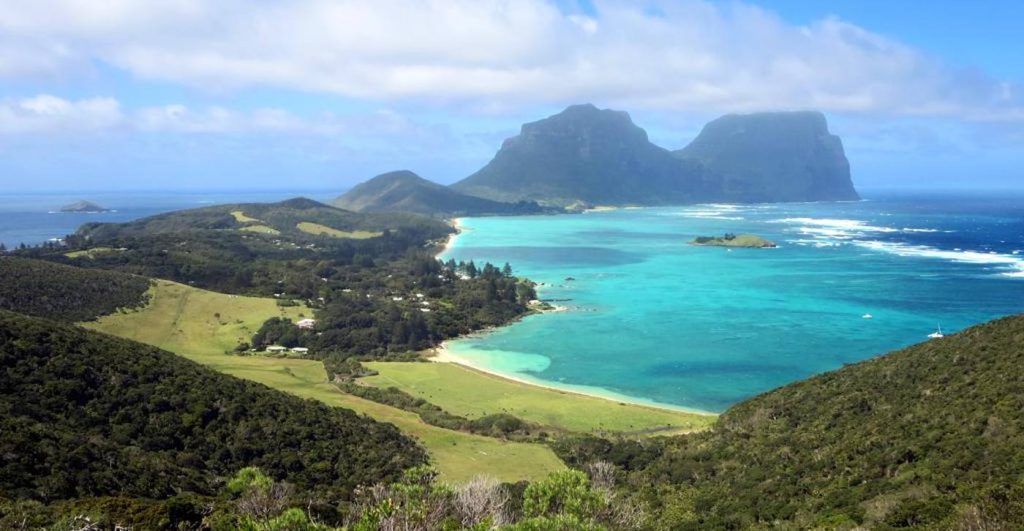 Examples of Lord Howe Island’s rare flowers. Credit: Ian Hutton, supplied to ABC.
Examples of Lord Howe Island’s rare flowers. Credit: Ian Hutton, supplied to ABC.In 2022, GNN reported on the return of wildlife seen on Lord Howe Island of Australia following an extermination campaign of rats.
Now, an expedition to the island’s high forests has revealed stunning imagery of a one-of-a-kind ecosystem where 85% of plants are found nowhere else on Earth.
“Ascending into this rare island cloud forest is like stepping into a fairytale—a hushed and secret world, carpeted in a tapestry of rich greens, rare palms, and twisted trees veiled in lichens,” writes ABC News Australia in a special report.
A UNESCO Natural Heritage Site in the East Tasman Sea, the island may have housed mice as early as the mid-1800s, with the rats arriving later in 1918. As is so often the case with biodiversity Down Under, the native animals suffered.
Their absence, which took three years of eradication, is revealing a diverse landscape—with fruiting trees, returning numbers of land invertebrates, and one of Australia’s rarest birds, the flightless woodhen—whose population has doubled to 565 in the past three years.
“What is unfolding is an ecological renaissance, since the rodents have gone, the catchphrase is: ‘I’ve never seen that before’,” Hank Bower from the Lord Howe Island board told the Sydney Morning Herald, in 2022.
The remains of an extinct shield volcano, the two peaks of the island are often shrouded in clouds, shading and moisturizing a forest of mosses, lichens, ferns, palms, and rare flowers.
 Lord Howe Island. Credit: David Stanley, CC 3.0., retrieved from Wikimedia.
Lord Howe Island. Credit: David Stanley, CC 3.0., retrieved from Wikimedia.“There are not many islands in the world with very tall mountains that stick up so high into the atmosphere they create their own cloud, so it is pretty special,” the island’s resident biologist and naturalist, Ian Hutton, said.
Now that renaissance mentioned by Bower has gone into overdrive, with the woodhens reaching 2,000 individuals. Providence petrels, a cliffside nesting seabird, has seen the success rate of its chicks rise from 2% to 50%.
Ian Hutton, an ecological researcher on the island since the 1980s, told ABC News that 30 threatened species of plants found nowhere else on Earth are rapidly redistributing to the slopes of the two mountains.
The Critically Endangered little mountain palm, once reduced to just 4 kilometers of range, is now thriving again.
Invertebrates are also thriving again with no rats to gobble them up. Photographing insects and snails during the nights, Sutton has found a weevil thought to have gone extinct in 1916, and 10 new species of land snail, including another 4 that hadn’t been seen for decades.
YOU’LL SURELY LIKE:‘Huge Environmental Win’: Australia to Protect 52% of its Oceans, More Than Any Other Country
Back in the 1950s, the island government made the decision to cap visitors at any given time to 400 people, a decision that has been retained now that the island’s reputation for unspoiled wilderness has been restored.
Only 25 houses have been approved for construction over the last 10 years, and every person, ship, flight, or animal is prevented from coming ashore until they have been scrutinized by a sniffer dog.
OTHER STORIES LIKE THIS: Tiny Indian Ocean Island Shows How Quickly Seabirds Recover When Invasive Predators Are Removed
Visitors to the island, ABC reports, routinely familiarize themselves with local species through de-weeding tours to clear invasive plants from the island’s habitations.
The piece from ABC includes stunning photography from all over the island, documenting the incredible resurgence of life, as well as the pride of the locals who live there.
SHARE This Incredible Biological Renaissance With Your Friends…
Source link

